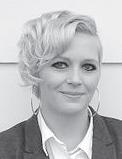


















































March 13-19, 2022, is the first Canadian Agricultural Safety Week (CASW) under the banner “Your Farm, Your Family, Your Success”. Organizers are calling all farmers, ranchers, farm families, farm workers and farming communities to implement farm safety plans, talk about farm safety, and value #FarmSafetyEveryday.
Canadian Agricultural Safety Week is an annual public campaign committed to raising awareness about the importance of farm safety. In 2022, organizers are focusing on not just practical safety advice and awareness but also the reasons why safety is essential for all farming operations.
“Farm safety is not just about knowing what hazards exist,” says Andrea Lear, CASA’s Chief Executive Officer. “Farm Safety is also about changing unsafe behaviours and habits, understanding the positive business case for incorporating safety on farming operations





and addressing what it truly means to value safety and health. This year, CASA is excited to host conversations about making meaningful and long-lasting change for the health and safety of everyone that lives, works, and visits farms and ranches.”
Farm Credit Canada (FCC) is the presenting sponsor of CASW and a valuable farm safety champion. FCC supports many farm safety programs, including Back to Ag, a program that assists with the cost of adaptive technology for farmers who have experienced a traumatic injury and CASA’s BeGrainSafe program.
“Farms present a variety of workplace hazards, so incorporating solid safety practices each and every day is paramount for reducing risk to farm family members and employees,” said Michael Hoffort, FCC president and CEO. “CASW is an important reminder each year for everyone to take care and be safe on the farm.”
For more than a decade, CASA has been raising awareness about the importance of safety on Canadian farms through CASW, which takes place every year during the third week of March. CASW is presented by Farm Credit Canada. In 2022, CASW sponsors include longtime corporate sponsor Farm Credit Canada, as well as CN, Syngenta, Bayer Crop Science and Fertilizer Canada. The Canadian Agricultural Safety Association is a national, non-profit organization dedicated to improving the health and safety of farmers, their families and agricultural workers. CASA is funded in part by the Canadian Agricultural Partnership, a federal, provincial and territorial initiative. For more information, visit www.casa-acsa.ca, find us on Facebook or LinkedIn, or follow us on Twitter @planfarmsafety




BY SHERI MONK for Your Southwest Media Group
Between drought, supply chain issues, and global unease surrounding the Covid-19 pandemic, the last couple of years on the agricultural front have been like a wild rollercoaster – the kind that people regret getting on in the first place. Now, the Russian invasion of Ukraine is causing more uncertainty and for some nations, fear of food shortages.
While many in the world simply don’t associate Russia with agriculture, (does Vodka count?) Russia and Ukraine combined produce 30 per cent of the world’s wheat and barley. Ukraine alone supplies the UK with 20 per cent of their cereals, and has been a pivotal exporter to the EU, and to other less food-secure nations. Thanks to its rich, black soil, the land surrounding the Black Sea has become known as the “breadbasket of the world” – but recent reports out of Ukraine are anticipating crop failures of nearly 100 per cent. While some fields will no doubt be damaged from heavy equipment and shelling, most crops simply won’t get in the ground this year. Instead of seeding, farmers are fighting on the frontline, in some cases using expensive farm equipment to block roads or otherwise slow down the Russians. Millions have also fled the country, leaving everything behind to try and bring their children and the elderly to safety.
“On the feed grains side, there are multiple things impacting the market. Not just tight supplies, but the fact that we’re relying on imports from the U.S. right now means that any trucker or rail disruptions also impact the market along with the Ukraine situation,” said Brenna Grant, executive director of CanFax.
While the West has typically relied on barley to finish cattle, the East has fed corn, but that has not been the case this winter.
“The issue with the barley crop is that grain yields in western Canada were down significantly, but of the barley that was produced, a lot actually went malt-quality or into the human consumption side of things. We are seeing significant reliance on corn imports from the U.S. where the American corn belt was less impacted by the drought,” said Grant.
“I think we have a lot of concern about weather coming into the spring, even just the hay crop, but also the grain crop and seeing what is going to happen for that. At this point we are still seeing elevated levels of cow marketings coming to town versus one year ago, so the liquidation of our cow herd is really going to continue until the feed supplies have improved,” Grant said.
“We’ve seen a lot of movement on the futures market, and when you’ve got corn trading at $7 USD per bushel, that has a direct influence on the value of U.S. feeder cattle. We’ve seen the feeder futures drop in the U.S. throughout February, but things look to have made a low on March 4 and have actually bounced back a wee bit this week.”
Incredibly, the feed grain shortage could lead to Canadian producers competing with Chinese buyers for North and even South American supplies.
“It’s really a volatility conversation. The Black Sea region is an exporter of wheat, barley and corn and their main market is actually China. If they
can’t get their product to China, is China going to replace that product from North and South America,” Grant questioned. “We just don’t know at this point. China’s demand for feed is really uncertain right now. They had expanded their hog sector following African Swine Fever and they actually had overproduction, which means they’re back in a liquidation phase for their hog sector. So it’s really unclear what their demand for feed grain is at this point.”
Alberta lightweight steers continued to see seasonal price increases recently, with heavier steers remaining steady.
“Given the futures markets, we are definitely going to see pressure on this feeder market, but it’s one where those cash prices staying steady is an indication of the strong demand that we have,” Grant said.
The demand, according to livestock and meat analyst Kevin Grier, is remarkable.
“The demand for beef has been the best I’ve ever seen in 30 years. It’s incredible, and it’s really a positive thing.”
While processors and retailers are benefitting from all that demand, cow-calf producers and feeders are struggling.
“The cattle end of the business is not that great because supplies are so abundant and capacity to get the job done is not quite there, so the cattle prices are not where anyone would feel happy, let alone with these costs that are going through the roof,” said Grier.
Farmers under pressure
“Russia is a major producer and exporter of oil, natural gas, nitrogen and potash fertilizer. We’ve already seen fertilizer prices increase and become very volatile. So again, this is just adding to that volatility and uncertainty in that market. If supply chains are disrupted, can they actually get product?” asked Grant.
Paul Heglund farms near Consul, Saskatchewan. In 2021, he received 188 mm or 7.4 inches of rain and he’s coming into spring with little to no snow cover.
“Last year there were 36 days with measurable precipitation. Most of the rains did no good at all –they were just too small. They just evaporated without touching the roots,” he said. “And it will cost double in 2022 what the 2021 crop cost to seed.”
Wheat prices have surged since Russia attacked, but input costs has been skyrocketing for much longer. While farm equipment and machinery has always been expensive, producers now have to worry not just about whether they can afford to replace equipment, but whether there will be any new equipment in stock to replace it with. In the past, people have turned to the used market, or paid to repair equipment, but replacement parts can be more difficult to come by and there’s an acute shortage of previously-owned equipment and machinery.

The escalating fuel prices will also take a toll on producers this year – the cost of diesel has increased 20 per cent since January alone and many anticipate prices to continue to spiral upward.
“It’s a precarious situation,” Grier said.
































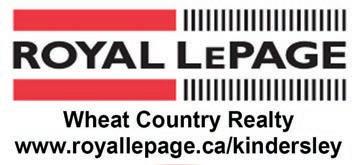

BY SHERI MONK for Your Southwest Media Group
Every once in a while, a series is released that seems to really capture the imaginations of people far and wide. Breaking Bad, Game of Thrones, Vikings, The Sopranos and Stranger Things are just a few that come to mind from recent years, but none have featured the cattle industry as their hook. Unless you’ve been living under a rock and unless that rock has absolutely terrible Internet, you’ve heard of Yellowstone. Not the park, but the (so far) four season series based on a ranch located on the border of the park. The show opens with a shot of blue sky spotted by white clouds as a tentative hand reaches into, then across the screen to a horse’s head. We hear the wind in the background at first, but then we hear the horse, and it’s in distress. The hand belongs to family patriarch John Dutton, played by Kevin Costner. He’s bleeding from a head wound that he doesn’t seem to notice. “Easy, easy,” he whispers to the animal. The horse calms. Dutton sighs, then places his head to that of the horse. He closes his eyes. “It’s not fair, this life.”
The camera pans out, and Dutton and his horse are in the background of a terrible highway wreck. We see a truck, wheels in the air, and a piece of construction equipment. Then the camera brings us back to man and horse, and we see its horrific injury, entangled with a piece of unrecognizable metal, probably the trailer it had been carried in. “I know you deserve better,” he says, raising his revolver. “Best I can offer you is peace,” he says. Dutton touches his face to the horse’s once more. The gun fires. The horse drops. Dutton walks away from the tragedy, grief hanging heavy on his frame as he picks his cowboy hat off of the pavement.
“It was too much for my sister-in-law. She couldn’t watch it. She’s a city girl. She’s never been exposed to the realities of country life. The idea of having to put down an animal to speed the process of death to spare it is nothing that she would experience,” said Heather Lukito, a school teacher and mom of three from Milton, Ontario. Milton has a population of 110,000, but it’s considered just a suburb of Toronto – just a town, by local standards.
“Most people that have lived a suburban life, unless they’ve had somewhere they could go and see the country life like that, even the thought of a gun is not part of reality for most. Most have never even seen a gun,” she said.
Back to the series opener, with hat in one hand, revolver in the other, Dutton walks, surveying the wreck, finding a dead driver in a smoking semi. He reaches around the dead man, retrieving the regis-

tration from the crushed dash. The truck and trailer belongs Paradise Valley Capital Development. This sets the viewer up for one of the prevailing themes of the show, a bloody and desperate battle between land uses and lifestyles in the ever-present war for resources. And if there’s one thing the series does well, it’s showing us that when one human side invariably wins, we all lose – including the land and the plants and animals forced to share it with us.
Heather is hooked on the show, and she’s been binging on it since December. She’s almost through season four. ViacomCBS has already announced a fifth season and there are – count them – already THREE spinoffs. So why does this show resonate so strongly with viewers?
“I think in this era of mass TV and production, Yellowstone seems more real. If you look at set design, there’s a lot of stage set-ups and you can tell… they’re always in this office, or they’re always in this building. This show is shot out on a ranch. Sure you have the house and maybe Beth’s office, but the majority is shot out on the prairie. It opens you up and it feels refreshing,” says Stephen Philpott, a Medicine Hat film buff and co-host of podcast “Scent of a Man”.
There may be other reasons very urban viewers feel such solidarity with Yellowstone’s characters. Modest, semi-detached homes are selling in Heather ’s neighbourhood for close to $1.5 million.
“The show is a fight for land. We’ve seen that here,” said Heather. “That’s been corrupted here as well. Those who had land have done very well as they sold to developers.”
“The characters themselves are super compelling and I’m attached to every one of them. Kevin Costner is a stand-out actor and this is the best I’ve seen him in a long time. He was made to play this role. Kelly Reilly as Beth is the one that has kept me in the series the most because she takes me through so many waves of up and down. I hate her or I love her,” laughs Stephen.
Beth Dutton, arguably the only main character who is also a woman, is a fierce train wreck, but capable of anything and everything. Successful, powerful and unapologetic, she comes equipped with a foul mouth, strong libido and an impressive alcohol tolerance. She can also be astonishingly vulnerable. Her partner, ranch hand Rip Wheeler, is one of the shows biggest draws – particularly to those who appreciate the male form. But there are plenty of other cowboys to lust after, including Beth’s brother Casey, and of course, John Dutton.
The series has some Canadian connections too. Acadia Valley’s Teren Turner played a masked and armed bad guy in an episode. And fans raved when the Calgary Stampede was given a pretty enthusiastic nod when character Lloyd Pierce, the cow boss, talks about earning his buckle at the Calgary Stampede, stating that it was his favourite rodeo and that people were nice to him for 10 straight days.
“Who is my favourite cowboy? It’s obvious. Like many it’s probably Rip,” laughs Julie Mont, a francophone fan who lives in downtown Montreal. She doesn’t own a vehicle, and takes the subway to work. “Yellowstone makes me want to become a cowboy.”
The sweeping landscapes and beauty of the prairie and foothills are part of why she became hooked on the series. “The scenes are so beautiful and the animals look amazing.”
Heather has been equally moved by the landscape and she would like to visit western Canada for the first time because of the show. When asked how long she would have to drive from her home in Ontario before she could find a gravel road and not encounter another car for an hour, she was stunned by the possibility.
“Where I could drive for an hour? And not see another vehicle?! Oh my goodness. Not see another vehicle? For an hour? I’d have to drive for 11 hours. I’ve never been there. I have never driven and not seen a car for another hour.”
Yellowstone has captured the imagination of viewers just like Heather and Julie in every major city in the world. And that may have more of an effect on social licence issues than all the combined marketing by beef groups to date.



“There’s been this push toward veganism, and I’ve seen that perspective too, yet even just with this show it feels like no, there’s another side to that story. We can’t lose that industry,” Heather said. “It definitely makes me think about it a little more. I think in the GTA, we tend to all think that our food just comes from the grocery store. We know cognitively it comes from the farmer, but are we thinking of the farmer every day? No.”
“What I really liked from the beginning, for me it was a new discovery. To see the cattle industry, the ranch and the role of the cowboy… I had a lot of biases and cowboys were very negative. To see it is actually very different than I thought. It’s what got me intrigued. I just wanted to know more about it. And the first three reasons I thought it was more about the role of the cowboy and the relationship with the reservation nearby,” Julie explained.
The show gets dark in a Breaking Bad meets The Sopranos kind-of way. Every single character is both a protagonist and an antagonist, and there is no such thing as redemption on Yellowstone. And the fans love it.
“It’s inspiring. Even if their way of doing it is questionable, it’s inspiring,” Julie said, admitting that ranching in real life probably doesn’t require quite as many one-way trips to the train station. “It has been a discovery and it gave me the impression that through this story I could learn a lot about this world. It is a culture in itself. It’s not at all like we see in the movies.”
sherimonk@gmail.com
BERLIN, GERMANY - We, the G7 Agriculture Ministers and the Commissioner for Agriculture of the EU, met today in the presence of our Ukrainian colleague, as well as the World Food Programme (WFP), the Food and Agricultural Organisation (FAO), the Organisation of Economic Cooperation and Development (OECD) and the Agricultural Market Information System (AMIS).
We are all appalled by and condemn the largescale aggression by the Russian Federation against the territorial integrity, sovereignty and independence of Ukraine, enabled by the Belarusian Government. We are deeply saddened by the devastating human losses and suffering, and we express our solidarity with Ukraine in line with our G7 Leader’s Statement on the invasion of Ukraine by armed forces of the Russian Federation.
We strive to provide national, bilateral and international support to help facilitate harvests in Ukraine and ensure the ability of Ukrainian farmers to feed their population and to contribute to global food security. We call on international organisations to support food production in Ukraine during this crisis and ensure food security in affected areas. We remain determined to do what is necessary to prevent and respond to a food crisis, including with humanitarian aid, and stand ready to act as needed to address potential disruptions.
We are deeply concerned about the impacts on food security and the rising number of people suffering from hunger and all forms of malnutrition, caused by the unprovoked and unjustifiable Russian war of aggression, adding to the already severe situation caused by COVID-19, climate change and biodiversity loss. This will only increase the suffering in the region and put pressure on food security globally. We note with grave concern the severe effects on global food supply chains and the sharp rise of already high prices for agricultural commodities and inputs, such as fertiliser, impacting food security and nutrition for vulnerable countries and populations.
We deeply condemn Russia’s attack on Ukraine. As Ministers of Agriculture, we are greatly alarmed by the targeting of critical agricultural infrastructure, including transportation and storage, which is having significant regional impacts. Given Ukraine is the fourth largest supplier of wheat and produces half of the world’s sunflower oil exports, this will additionally have global impacts on food systems and food insecurity.
We commit to cooperating closely and taking concrete actions to safeguard global food security and nutrition, especially supporting food security for the people of Ukraine. We reaffirm the importance of working together to maintain the flow of food, products, seasonal labour and inputs essential for agricultural and food production across borders in line with all measures adopted in response to the current situation. Moreover, we will work together to address transportation challenges for food exports and commodity production.
We call on all countries to keep their food and agricultural markets open and to guard against any unjustified restrictive measures on their exports. Any further increase in food price levels and volatility in international markets could threaten food security and nutrition at a global scale, especially among the most vulnerable living in environments of low food security. We nevertheless recognise the extreme circumstances behind the export restrictions announced by the government of Ukraine and the vital importance of preserving the availability of food in Ukraine.
We will not tolerate artificially inflated prices that could diminish the availability of food and agricultural products. We will also fight against any speculative behaviour that endangers food security or access to food for vulnerable countries or populations. Therefore, we are closely monitoring markets affecting the food system, including futures markets, to ensure full transparency. We will continue to share reliable data and information on global food market developments, especially through the relevant international organisa-





tions.
We will work together to help ensure that sufficient, safe, affordable, and nutritious food continues to be available and accessible to all people, including the poorest, the most vulnerable, and displaced people in a timely, safe, and organised manner, and particularly for the people of Ukraine. We deeply thank all farmers and workers, and food and agricultural businesses along the supply chain, who continuously provide our food supply in a sustainable manner. We will continue to support food security in line with climate and environment commitments and the sustainable development agenda.
Together with G7 foreign and development ministers, we will continue our close cooperation within the G7 and with relevant international organisations, multilateral development banks and international financial institutions to respond to the impacts of the war on food security and nutrition. In this regard, we will inform one another and strive to coordinate the measures we take to ensure food security and market stability, in respect of both Ukraine and countries and regions that may experience food insecurity.
For eye care focused on you!
For comprehensive eye care, visit us at 103 - 1st Ave. W., Oyen
403-664-3300
www.oyenoptometry.com
Facebook: Oyen Optometry & Absolutely Eyes
We stand united with our partners and with the government and people of Ukraine during this crisis. We will continue our close cooperation to respond to the impacts of the war, including on agricultural and food trade, food security and nutrition.
For comprehensive eye care, visit us at 107 Main Street, Kindersley
306-463-8266
www.absolutelyeyes.com
Facebook: Oyen Optometry and Absolutely Eyes
Dr. Jackie Hagens & Associates

“Because there is so much worth seeing!”



Rising gas prices have made beer cheaper than the cost of gas. Now people have more reason than ever to do the right thing .... drink beer and don’t drive.
Regarding doing the right thing, Prime Minister Trudeau recently said, “Make no mistake Russia’s attack on Ukraine is also an attack on democracy, on human rights and on freedom. Russia’s actions stand in direct opposition to the democratic principals that generations of Canadians have fought to protect.
Democracies and democratic leaders must come together to defend these principals and stand firmly against authoritarianism.”
Trudeau backed up his statement by leaving for Europe last Sunday to meet with leaders in the United Kingdom, Latvia, Germany and Poland. A senior government official said Trudeau’s office sees value in face-to-face meetings with allies. While it’s good to see our Prime Minister’s prompt response to this international situation, his response to Canadians is
much different. His apparent value of face-to-face meetings was not evident when he refused to take a short walk to meet with Canadians who were protesting outside his front door. Not only did he refuse to listen to them, meet with them or speak to them, he resorted to name calling ... extremists, racists with unacceptable views.
The Prime Minister had more to say regarding the Ukraine, “We‘ve come to a moment that we’ve seen coming over the past years. We’ve talked about it in the

news, not just about the Ukraine, but democracies throughout the world. We see a bit of a slippage in our democracies. Countries turning toward slightly more authoritarian leaders.” Is it authoritarian to treat protestors differently depending on what cause they are protesting?
The PM went on to say, “Countries are allowing increasing misinformation and disinformation to be shared on social media, turning people against the values and principles of democracy that are so strong.” Is that why the federal government is introducing new censorship legislation in Canada? Would this legislation muzzle critics while promoting messages the government wants you to see?
porting on the recent international crisis has been accurate.
Regarding the international crisis, our federal environment minister said Canada is not the solution to the energy security crisis caused by Russia’s invasion of the Ukraine. Dave Yeager, an oil and gas industry analyst said, “The bad guys are intentionally using their significant oil and gas exports as a geopolitical weapon for nefarious purposes. The good guys like Canada have been intentionally withholding new oil and gas supplies and exports to save the world from climate change.”

Meanwhile the legacy media’s narrative regarding the trucker’s protest appeared to closely follow that of the Prime Minister. This has caused a mistrust of what people hear from the legacy press, even when their re-
The truth is Canada’s responsible energy supply can help end dependence on oil and gas from dictator states like Russia. Pierre Poilievre, MP, noted that unleashing Canadian energy would take money away from dictators and give pay cheques to Canadians instead.
Meanwhile the people with boots on the ground in the Ukraine are dis-





playing their courage for the world to see. A pastor in Poland said, “I see people risk a lot to take people on foot to the border and back again, multiple times a day, for no other reason than it’s the right thing to do. Men volunteer sixteen hours a day to drive people to the border and drive back again. As sad as the situation is, at the local level the absolute best in human nature comes out.”
Canadians need leadership that will follow the example of the brave citizens in the Ukraine and Poland, and make decisions, for no other reason than it’s the right thing to do.



Last Saturday, I was a judge at a 4-H public speaking event held in Val Marie. I enjoy this gig because I get a ringside view of the passions of the next generation preparing to rule the world. This year I learned 5 Reasons to Hate Roosters, how to stay on an inner tube while bouncing along a lake, and what really went down at the Trucker’s Rally in Regina.
I never knew what 4-H was until I moved to the country. As a kid growing up in small cities, I wasn’t much of a joiner. As a cradle Catholic, I acquired instant membership to an exclusive club that required more memorizing and acts of sacrifice than any child should be expected to perform. I can still recite The Apostle’s Creed, and while I find solace in the idea of “the communion of saints” - all our dead loved ones looking down on us - I have always felt




hypocritical for proclaiming a belief in a world I couldn’t comprehend.
Which is why I only lasted a day in Brownies. No more pledges and promises and creeds please; you’re just asking me to add to my burden of hypocrisy. I played baseball for two seasons, but I never hung with the team after games. I was excruciatingly shy, and without a ball to toss or whack into left field, I had nothing in common with the other teenage girls. After the game, the focus shifted; all my teammates wanted to talk about was boys. And booze. Neither of which were part of my life. My life was about books and my bike. From what I’ve observed, the youth who live in and around my village of Val Marie and who belong to 4-H focus on the pragmatics of the care and feeding of animals. Through demonstrating to themselves their ability to take on responsibilities, share duties, learn from each other, they develop a confidence and poise that is remarkably different from many of the city kids I know.
The 4-H pledge reads: “I pledge my HEAD to clearer thinking, my HEART to greater loyalty, my HANDS to larger service, my HEALTH to better living, for my club, my community, my country and my world.” Clarity, loyalty, service and healthy living - we
could all benefit from a club with a focus like that; the idea of belonging to a larger community other than one’s own little world is not a concept easily grasped by the adults of today.
The Public Speaking event I judged both this year and last is my opportunity to contribute to the first H, “pledging our HEADS to clearer thinking.” Public Speaking is something I did enjoy as a kid. It was the one place where I could get up on stage and voice my thoughts and opinions and not be interrupted or ridiculed. We all need a place where we can develop our knowledge and understanding of aspects of life that intrigue, concern and even threaten us. Public Speaking is that place. One of America’s greatest humorists, Fran Lebowitz, said that as a kid, she was sent to her room for being smartmouthed and now she gets paid thousands of dollars to speak to packed rooms. “What was once called talking back is now called public speaking,” she quips about a documentary about her life called Public Speaking.
Of course, Fran’s success is because she doesn’t just “talk back”; she talks us through a subject, “in an entertaining fashion” while looking underneath it to take apart its constituent parts. She parses language and polishes punch lines to enable us to see clearly, to
Notice is hereby given under The Tax
By Madonna Hamel • madonnahamel@hotmail.com
encourage clear thinking. I’ve had the privilege of listening to speakers as young as six, barely able to read yet bravely standing in front of a microphone and expressing themselves to a room full of strangers. I’ve been entertained by the older ones so poised and attentive to the younger ones I just assumed they were in their twenties, only to learn they were barely seventeen. But then, I realize after hearing their speeches, why shouldn’t they know how to calm a skittish child? They can gentle wiry colts bent on showing them who’s boss.
One summer, just after I graduated in performance, I was hired by an art gallery to teach street kids how to compose and perform monologues. Ha. Me teach them. The lives they’d lived and the things they’d seen were beyond what most folks experience in a lifetime. They survived by condensing their stories into quick pitches and tossed
them at passersbys on busy city streets. I was giving them a night at a local gallery to present their pitches as stories and poems. “They are coming to see you,” I reminded them. “People are coming and paying and sitting in chairs to hear you.”
What those kids had in common with the 4-H public speakers is the rare opportunity to have a room full of people willing to give them the time and respect it takes to relax and focus on articulation and clarity. There’s no need to yell, point fingers, get defensive or pushy. And no need to rush. The most touching habit of most people new to speaking in public is the speed at which they move through the precious moment they are given. I always reiterate the rule of thumb I learned in broadcasting: When it starts to sound like you’re speaking tooooo slooooowly, that means it’s just right.” 4-H is on to some-

thing: maybe the rest of us should form public speaking groups. Why not create a space wherein we practice listening to each other, where, if you don’t share my worldview, you won’t get called wrong. Or stupid. Why are rabid politicians and tv anchors who fill our heads with toxic opinions passing as facts? It won’t kill us to see through each other’s eyes. In fact, it will kill us if we don’t realize that not every conversation has to be a battleground, but a place where we can actually learn a thing or two.
Notice is hereby given that the assessment roll for the Town of Kindersley for the year 2022 has been prepared and is open to inspection in the office of the assessor from 8:30 a.m. to 4:30 p.m. on the following days:
Monday to Friday
March 11, 2022 to April 11, 2022
A bylaw pursuant to section 214 of The Municipalities Act has been passed and the assessment notices have been sent as required.
Any person who wishes to appeal against his or her assessment is required to file his or her notice of appeal with: Board of Revision Secretary Western Municipal Consulting Ltd. P.O. Box 149
Meota, SK S0M 1X0 by the 11th day of April, 2022
Dated this 11th day of March, 2022.
Canada has always taken pride in its reputation for peacekeeping and helping its neighbours – traits that are exemplified by some of the rural communities this publication serves. I’ve lived in all three prairie provinces. I grew up in Winnipeg, where the licence plates read “Friendly Manitoba” –and they aren’t kidding about that. Even now when I go home to visit, I’m sometimes surprised by how open and chatty everyone is, even in the city.
When I left big city media in 2007 to move to southwest Saskatchewan, I wasn’t sure what I was in for. I may have come for the rattlesnakes, but I stayed for the people. (It’s a weird passion, but anyone who knows me, knows I spend my summers chasing snakes just to see them.)
Of course, I landed in a cattle town at the height of the BSE crisis and there I learned pretty near everything I could about the beef business. Its connection to the land, its reliance on the U.S. economy, its friendly competition
with crop farmers, and of course, its infamous politics. By proxy, I learned some about grain farming, about organics, and a little about the many crops we are so fortunate to grow across our nation. And while it was all interesting, it’s really the people behind it all that are so compelling. I remember showing up in the evening to a farmhouse near Saskatoon to interview a family who had experienced hardship after a contaminated feed incident. I had worked late the night before, slept a couple of hours, and worked before hitting the road. I was exhausted and it clearly showed. I wish I could remember their names – maybe it was Russ and Shirley. Anyway, Russ was out combining late and Shirley insisted on feeding me supper. I don’t recall what it was, only that it was needed and delicious. And then she put me to bed on her couch. I don’t even think I argued. I remember being tucked in with a blanket for the first time since I was a little kid and I slept like a rock until Russ came in for

Burstall, Sask.
PH: 306-679-2000 • rm232@sasktel.net

the night. I was – and still am – so grateful for their kindness.
Another time, I was somewhere near Val Marie and I had pulled over to photograph something. Frogs I think, or maybe a snake and it was nighttime. I hadn’t seen another vehicle for a couple of hours, so when this one approached I could hear it before I could see it. I was pretty new to the region, and I stood up and waited for the truck to pass. It didn’t pass. It stopped. Now, as a young woman from a city, if a man stops a vehicle anywhere near you and you’re alone, you immediately think the worst. Not this time though.
“Do you need any help, miss?” he called from his rolled-down window.
“No, thank you. I’ve just stopped to photograph this snake,” I answered. (I’ve decided it was a rattlesnake after all.)
I figured that would be the end of it, but he hopped out of the truck. Again, my alarm bells went off. I always carry a pocketknife and some common sense, but that’s not always enough. For the second time in 30 seconds, I was surprised. He wanted to see the rattlesnake too. I think he spent about five minutes with me and by the end of the visit, I had a bunch more wisdom than I had started out with, and permission to hike his land for my favourite critters. That – at least to me – more than anything else, is the spirit of the West. It isn’t the cowboys or the waves of golden grain. It isn’t found in a trucker blockade or at the bottom of a
bottle of Pilsner. It isn’t western alienation or separatism. It isn’t a way of voting, or a style of dressing. It’s not divided by town or country. It doesn’t start in a church, or a rodeo and it doesn’t end at them either. It’s not oil, or potash, or sagebrush or sunsets or even snakes. It’s how we treat people. It’s how we go in thinking the best of one another instead of assuming the worst. It’s turning a house that sleeps six into one that could sleep 60, if it had to. It’s learning from mistakes and listening even when it’s easier to talk. It’s feeding people when they’re hungry and finding them when they’re lost. It’s pulling together when everything else is falling apart.
This could be a tough year for us in the rural West. We’re looking at some tough times thanks to shortages and the price of feed, fertilizer and fuel. Some of you may already have had to bring cows to town that should have stayed home. Others are coming into spring with little or no snow after a terrible drought. Some are holding their equipment and machinery together with just bailer twine and a prayer, knowing they couldn’t find anything new to replace it with, even if they could afford it. Others are going to have to pay thousands and thousands more this year just to get a crop in the ground without knowing whether they’ll get it out.
between 15 and 20 per cent of global grain and barley exports. We help to feed the world and the world is going to need more help than ever.
Canada is one of the biggest contributors to ending hunger, and the second-largest donor to the World Food Program. Sometimes peacekeeping looks like feeding people, as unimaginable as it seems to us. There are 195 countries in the world and only about a dozen nations can truly feed themselves. We are one of them
So we will show up this year. We will do our best, and we will work harder than ever. Whether you’re a producer, or a retailer, a school-bus driver, trucker or a nurse, our rural communities need you more than ever. Keep investing in one another, in your communities,
BY SHERI MONK

and in yourselves. Try and shop locally, when and if you can. Try and help each other, more than you ever have. We will grin and grimace and bear it together. We will sweat while Ukraine bleeds. We will make it count – and not because we have to, but because we can. That is who we are and we are the spirit of the West.
Sheri Monk is a journalist and rattlesnake aficionado based in Redcliff, Alberta. sherimonk@gmail. com




And yet, we all know we must – and this year more than ever. Canada’s peacekeepers and heroes don’t always wear fatigues. Sometimes they wear Carhartts and ballcaps. Sometimes combat boots are cowboy boots, and sometimes our arsenal is made up of combines and tractor balers.
As you read this, the people of Ukraine have put everything on the line for their country. Men and women of all ages have left their jobs, families, hom es and even their farms to fight for their country. There will be no crop in Ukraine this year, and right now, their people are paying in blood for just the chance to have again what we all have right now – peace and freedom.
They will keep fighting, and so will we. Canada is responsible for


Due to a recent uptick in rural property crime the Kindersley RCMP is reminding residents both in rural and urban areas to make sure they safeguard their property.
‘We have had a few break and enters and thefts reported in our rural areas lately and we want residents to remain vigilant for any suspicious people or vehicles near their properties and take steps to secure any items that might make for easy targets.’ Staff Sergeant Kevin Peterson stated.
The Kindersley RCMP offer these tips for preventing thefts:
• Lock your vehicles and equipment. Don’t leave valuables, tools or keys in them.

• Lock and secure your home, outbuildings and slip tanks.
• Consider lights with motion sensors, as well as a monitored security or alarm system.
• Report suspicious people and/or vehicles to police.
• Report crimes, even if they are small, to police as soon as possible. When all crimes are reported to the police, officers get a clearer picture of the types and numbers of crimes occurring in their area. This information helps them launch future police projects, initiatives and education campaigns.
The Kindersley RCMP also want to remind all area residents that security cameras act as a good

theft deterrent as well as assist the RCMP with investigations. If you have a security camera you are reminded that the Kindersley RCMP has a newly formed security camera registry and you can always voluntarily register your camera at saskcapturecw.ca. By registering your security camera, it greatly assists the RCMP and the community with detecting criminals in the area.
If you need to report any suspicious activity in your community, please contact the Kindersley RCMP detachment by calling 306-463-4642 or their local police service. Information can also be provided anonymously through Saskatchewan Crime Stoppers by calling 1800-222-TIPS (8477) or submitting a tip online at www.saskcrimestoppers.com.
Online Crime Reporting can be accessed at: https://ocre-sielc.rcmp-grc.gc.ca/saskatchewan.
*For more information on the calls to service please contact the Kindersley RCMP detachment.

Better Together is a relatively new initiative in Kindersley and area. You may have seen people wearing hats or t-shirts adorned with the ‘Better Together’ logo. The front of each t-shirt displays pictures of items that go better together, like milk and cookies or bacon and eggs. We all realize that bacon and eggs go better together, but each individual is better when they have someone come along side them to show they care.
On Tuesday afternoon, March 8th, Better Together representatives, Marge Bailey and Perry Lewin, visited the residents at Caleb Village. They presented an opportunity to the residents to have someone from the Better Together group drop in to visit, have a coffee or
even play a game of cards together. To make a difference in someone’s life, you don’t have to be brilliant, rich, beautiful, or perfect. You just have to care.
That’s exactly what the Better Together group was proposing to the residents at Caleb Village. In addition to the offer of planned visits to any interested residents, they had another exciting proposal for their audience.
The Better Together group had contacted Maureen Ryan-Dobbin at Elizabeth Middle School in Kindersley, asking if any students would be interested in becoming pen pals with a senior. Maureen was absolutely thrilled when fifteen students said they were willing to write letters to seniors!
It’s another excellent opportunity to bring people together, and seniors and children definitely are better together!









BY BRIAN ZINCHUK

Back in 2009 or 10, I attended a small oil conference in Regina that had run for a few years. While there, I met with a guy who worked with Shell.
It was probably the only time I ever ran into a Shell representative.












This was at a time when the Bakken boom was still in its early stages. There had been a short-term downturn, but things were about to pick up in a big way, which they eventually did. It was also at a time when Saskatchewan oil production still far exceeded North Dakota’s, just before their own Bakken boom exploded.
Shell was the original developer of the CO2 flood at Midale, for instance. That field was originally developed by Shell in 1953, and they operated it for close to 50 years before selling to Apache Canada in 1999, which has since sold it to Cardinal Energy in 2017. I said to him, “I’ve talked to a lot of old-timers around here, and they’ve told me about how big companies like Shell and Imperial Oil used to be active in southeast Saskatchewan. But now you’ve all gone. Why is that?”
He responded that Saskatchewan was essentially small potatoes. Shell needed big plays, 100,000 to 250,000 barrels per day or more, and that’s where they were putting their money.
And that was the last I heard from Shell.
Step forward to Feb. 28, 2022. Shell announced it was exiting its Russian plays. You know, the big ones that the guy alluded to in 2009.
In reaction to the Russian invasion of Ukraine, Shell stated:
The Board of Shell plc (“Shell”) today announced its intention to exit its joint ventures with Gazprom and related entities, including its 27.5 percent stake in the Sakhalin-II liquefied natural gas facility, its 50 percent stake in the Salym Petroleum Development and the Gydan energy venture. Shell also intends to end its involvement in the Nord Stream 2 pipeline project.
“We are shocked by the loss of life in Ukraine, which we deplore, resulting from a senseless act of military aggression which threatens European security,” said Shell’s chief executive officer, Ben van Beurden.
Shell’s staff in Ukraine and other countries has been working together to manage the company’s response to the crisis locally. Shell will also work with aid partners and humanitarian agencies to help in the relief effort.
“Our decision to exit is one we take with conviction,” said van Beurden. “We cannot – and we will not – stand by. Our immediate focus is the safety of our people in Ukraine and supporting our people in Russia. In discussion with governments around the world, we will also work through the detailed business implications, including the importance of secure energy supplies to Europe and other markets, in compliance with relevant sanctions.”
At the end of 2021, Shell had around $3 billion in non-current assets in these ventures in Russia. We expect that the decision to start the process of exiting joint ventures with Gazprom and related entities will

impact the book value of Shell’s Russia assets and lead to impairments.
So, how did those big projects work out for you, Shell? Have fun, getting in bed with the Devil?
Here’s their list, included in the above release:
In 2021, Shell share adjusted earnings from Sakhalin Energy JV and Salym JV were $0.7 billion.
Shell has a 27.5 per cent interest in Sakhalin-2, the joint venture with Gazprom, an integrated oil and gas project located on Sakhalin island. Other ownership interests are Gazprom 50 per cent, Mitsui 12.5 per cent, Mitsubishi 10 per cent.
Shell has a 50 per cent interest in Salym Petroleum Development N.V., a joint venture with Gazprom Neft that is developing the Salym fields in the Khanty Mansiysk Autonomous District of western Siberia.
Shell is one of five energy companies which have each committed to provide financing and guarantees for up to 10 per cent of the estimated €9.5 billion total cost of the project.
A joint venture With Gazprom Neft (Shell interest 50 per cent) to explore and develop blocks in the Gydan peninsula, in north-western Siberia. The project is in the exploration phase, with no production.
That’s a lot of bucks. And a lot of projects. Good on them for showing real spine in cutting ties with Russia.
Last year they did sell off their Alberta Kaybob Duvernay assets to Crescent Point, which then paid off their debt to buy those properties in less than a year.
But I can’t help but think how it’s funny how they didn’t have to walk away from any projects in Saskatchewan due to our initiation of any wars.
It turns out, they haven’t yet been able to walk completely away, either. They’re still buying Russian oil.
And as it says in Proverbs 26:11, “As a dog returns to his vomit, so a fool repeats his folly.”
On March 5, Shell issued this statement:
We are appalled by the war in Ukraine and have already made clear our intention to exit joint ventures with Gazprom – which is majority-owned by the Russian government – and related entities, as well as intending to end our involvement with a significant project to pipe gas from Russia to Europe.
We have been in constant discussion with governments about the consequences of the war on the security of energy supplies. We have acted throughout in accordance with what we have understood was the intent to allow energy flows from Russia for the time being in order to provide security of energy supply.
Yesterday we made the difficult decision to purchase a cargo of Russian crude oil. Our refineries produce petrol and diesel as well as other products that people rely on every day. To be clear, without an uninterrupted supply of crude oil to refineries, the energy industry cannot assure continued provision of essential products to people across Europe over the weeks ahead. Cargoes from alternative sources would not have arrived in time to avoid disruptions to market supply. We didn’t take this decision lightly and we understand the strength of feeling around it.
CONTINUED NEXT PAGE


We will continue to choose alternatives to Russian oil wherever possible, but this cannot happen overnight because of how significant Russia is to global supply. We have been in intense talks with governments and continue to follow their guidance around this issue of security of supply, and are acutely aware we have to navigate this dilemma with the utmost care. We welcome any direction or insights from governments and policymakers as we try to keep Europe moving and in business.
We will commit profits from the limited amount of Russian oil we have to purchase to a dedicated fund. We will work with aid partners and humanitarian agencies over the coming days and weeks to determine where the monies from this fund are best placed to alleviate the terrible consequences that this war is having on the people of Ukraine.
There’s a few things apparent from the Feb. 28 press release and Mar. 5 statement.
Shell seriously took it on the chin, and is walking away from billions of dollars of investments in Russia. It’s also become readily apparent that even if there is no formal boycott of Russian energy, it appears, at least to Shell, that an informal one is well on the way. That they would issue a statement of shame about them doing what, until two weeks ago, was just normal business, is very telling. But in the meantime, Shell points out that they simply did not have other alternatives.
And this is where I, too, return like a dog, not to its vomit, but to the bone I’ve been chewing on for years. If Canada had built Energy East, we could have been one of those alternatives. Perhaps it might have been only a half million barrels per day, but it would have indeed been an alternative. And it’s less than half the distance sailing from St. John, New Brunswick to Rotterdam than is from Kuwait (roughly 5,700 kilometres compared to 12,400 kilometres via the Suez Canal).
But inexcusably, a Canadian project that is much closer was just in the past few days slow-walked by our Environment and Climate Change Minister Steven Guilbeault. Last Friday his office announced he would be making Newfoundland and Labrador wait another 40 days for a federal decision on the Bay du Nord project.
More environmental consideration apparently. But no war consideration.
That offshore project, which would use a floating production, storage and offloading unit (FPSO) is literally in the middle of the ocean, on the way to Europe. The project’s webpage, already out of date, notes, “It is currently expected that an investment decision could be made in 2021, with first oil to be produced in 2025.”
Now, to be clear, Husky, before it was purchased by Cenovus, delayed Bay du Nord due to the COVID-19 pandemic, when the oil world was falling apart due to the end of the world as we knew it. But those days appear to be over now.
Surely someone in the federal government must

note there is now an imperative to get Canadian oil production to Europe as quickly as possible. Even if this war is resolved in weeks, the world has learned it cannot trust Russia in its current form, for anything.
In the case of this project, the FPSO would be loading product onto shuttle tankers, which would then load full-sized tankers to go to market. No pipeline involved!
The distance from Bay du Nord is just 3,900 kilometres to Rotterdam, one third the distance from Kuwait. By running those shuttle tankers to Placentia Bay for transfer to larger tankers, and out again would add about 1,400 kilometres total, there and back. No big deal.
A little over a week ago I had a conversation with both the president of the Canadian Association of Petroleum Producers and their vice president for oilsands. I implored them to talk to their members about looking at how we, as a nation, can ramp up our production as soon as possible. We need to stop thinking like Can’tada, where we can’t get anything done, and start thinking like our grandparents did 80 years ago during the Second World War. We need to look at getting projects done in months, not years. The original Trans Mountain Pipeline was built in 19 months, with equipment and technology far inferior to what we have now. And the first “Big Inch” pipeline of its type in the world, called the Big Inch Pipeline, was built from Texas to the mid-Atlantic coast because tankers from Texas were being sunk by U-boats. It was built in 14 months, not a decade.
We can provide Canadian oil for Shell’s refineries. First, it might mean using crude-by-rail. If they can receive oil at Montreal, it shouldn’t take too much plumbing to be able to load tankers there. So get our western crude to Montreal by train.
As you’re doing that, build Energy East. Use the long-lead items that were ordered and ready to go for Keystone XL for the pumping stations. That could get oil as far as Kingston, from which rail could be used to Montreal while the pipeline is built from Kingston to St. John, New Brunswick.
Revive and build the Cacouna tanker export terminal on the St. Lawrence. That’s the one that was so threatening to whales, but the same whales weren’t threatened by tankers bringing oil into Canada.
Built the export terminal at the Irving Refinery at Saint John, New Brunswick.
There you go. Do all that, and Shell can tell the Russians to pound sand. And along the way, Canada can become energy independent. The oil we don’t import here could go to supply Europe, again displacing Russian oil.
This can happen. We just need to make it happen. That starts with the sacking of Steven Guilbeault.
Brian Zinchuk is the editor and owner of Pipeline Online. He can be reached at brian.zinchuk@pipelineonline.ca.

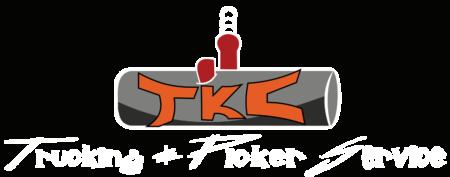

maintenance, operation of oil wells & facilities and engineering support.
Candidates should be enrolled in a post-secondary program with preference given to engineering, technology and environmental sciences. Proof of enrolment is required.
Safety training will be provided to successful candidates. A valid driver’s license is required.
Please send a cover letter and resume to: Kayla Flanagan (WCSK) kayla.flanagan@wcap.ca








The Canola Council of Canada agronomy team has set five agronomy priorities to drive canola profitability, sustainability and productivity gains over the long term.
By Clint Jurke
The Canola Council of Canada’s five agronomy priorities, when implemented fully in every field, will improve canola yield and profitability, and will help to ensure success with the crop.
1. Use 4R nutrient management practices
All farms will benefit from applying the right fertilizer products at the right rate, right time and right place to improve yield, reduce nutrient losses and increase profits. These are the 4Rs of nutrient management. One-pass seeding into standing stubble, a fairly common practice, is an excellent foundation for 4R. Canola Council of Canada (CCC) agronomy specialists also encourage farmers to use soil tests and set fertilizer rates based on soil-test recommendations. Canada’s canola industry has a goal to see 4R practices utilized on 90 per cent of canola acres by 2025. Go to canolacouncil.org/4R for more details on the goal and on 4R practices.
2. Choose the best seed traits for each field
Try new cultivars all the time. Yield lost to incorrect cultivar choice may be a greater risk than yield gained by choosing the highest-yielding cultivar. The best seed traits can include disease resistance specific to risks for each field, maturity to match crop establishment and harvest timing goals, and pod-shatter resistance to harvest more of the crop. Use the tool at canolaperformancetrials.ca to compare cultivars.
3. Achieve a uniform 5 to 8 plants per square foot
Hybrid canola studies in Western Canada show that a stand with five to eight plants per square foot is best to maintain the yield potential of canola.
Uniformity is also key. To simplify pest management and harvest timing, try to achieve the target population across the field and have all plants at the same growth stage. To set seeding rates that will achieve the target stand, use the calculators at canolacalculator.ca. For more agronomy tips, read the Plant Establishment chapter at canolaencyclopedia.ca.
4. Identify and manage the top yield robbers
Canola growers can find all kinds of pests and problems in their fields. The key is to focus time and inputs on the most important yield loss factors. Scout regularly to see what pests, environmental factors or mechanical issues (seed placement, sprayer settings, etc.) cause the greatest loss for each field. Find scouting and management tips for flea beetles, sclerotinia stem rot and all other major pests in the Diseases, Weeds and Insects chapters at canolaencyclopedia.ca.
5. Harvest all seeds and deliver them at No.1 grade
We want canola growers to deliver every seed at No.1 grade, and leave none behind. To do this, growers have three steps: One, give all seeds time to mature. Two, harvest with minimal losses. And three, store canola without spoilage. Grower survey results suggest that canola growers, in general, may achieve yield improvement through later swathing. The survey also showed that straight combining is associated with higher yields in the southwest Prairies. The Harvest and Storage chapters at canolaencyclopedia.ca have tips for all three steps.
Clint Jurke is director of agronomy for the Canola Council of Canada. Email jurkec@ canolacouncil.org.






Last week, the Water Security Agency (WSA) is sharing the spring runoff forecast for 2022. This forecast is based on conditions as of March 1. WSA actively monitors snowpack and precipitation during the winter months to forecast the province’s available water supply through the summer and fall and to prepare for any potential issues. WSA completed snow surveys in mid-February to assess the water available for runoff. For the most part, water supplies from the province’s major reservoirs are expected to continue to meet the province’s needs in 2022.
Fabien Olsen on
Year
As previously reported, the hot and dry conditions throughout 2021 caused most areas of the province to go into winter with drier than normal moisture conditions. Therefore, despite significant amounts of snow, some areas with dry conditions at freeze-up are still predicted to have normal to below normal runoff.

wan River. This may result in ice jamming and flooding similar to what was observed on the river in 2020. The public should remain vigilant when near melting waterways as ice jamming and breakup can be unpredictable.
With an alpine snowpack that is generally well above normal, the agency is optimistic that flows on the Saskatchewan River System and levels at Lake Diefenbaker will be better than what was observed in 2021. The Water Security Agency
the Kindersley and District Co-op
our Kindersley Grocery - Meat Manager! Fabien has worked with the Kindersley Co-op since January of 2012 and is a valuable team member with years of knowledge and experience in our Meat Department! Congratulations Fabien!
WSA is currently expecting a below to well below normal snowmelt runoff response over much of southern Saskatchewan. Only areas east of Moose Jaw are forecast to receive near or above normal runoff. Below normal runoff in the southwest may result in some water supply issues, including shortages and potentially water quality related issues later in the year. With a significant snowpack, above to well above normal snowmelt runoff yields are expected across central areas of the province. However, flooding is not expected at this time.
With significant snowpack within the North Saskatchewan River Basin, there is an elevated risk of a dynamic ice breakup event occurring on the North Saskatche-
will continue to protect and manage our water supply to support industry and habitat.
When developing this snowmelt runoff outlook, WSA assumes normal weather conditions going forward to the conclusion of the melt. Any increased runoff potential would be reflected in the April forecast provided runoff is not already underway. The current report can be found on the wsask.ca website under Provincial Forecast.










Enterprises Ltd. 112 - 12th Ave. E., Kindersley, SK • 306-463-4242

Monday: Kindersley AA Meeting
8:00 PM, Legion Hall
Tuesday: Brock AA Meeting
8:00 PM, Vesper Club
Tuesday: Leader AA Meeting

8:00 PM, Leader United Church
Wednesday: Eston AA Meeting
8:00 PM, St. Andrew’s United Church
Thursday: Kindersley AA Meeting
8:00 PM, 401 - 1st Avenue West
Friday: Kindersley AA Meeting
8:00 PM, St. Olaf’s Lutheran Church
Narcotics Anonymous
Tuesday: Kindersley NA Meeting
7:30 PM, 113 Main Street



KICKOFF TO SUMMER EVENT June 10-12
Eston Slowpitch Tournament
To Register your team contact Recreation Director Bret Howe at the Town Office 306-962-4444 or email recreation@eston.ca
$250/team - 16 yrs. or older
CALLING ALL VENDORS! WE ARE SEEKING VENDORS FOR THE SUNDAY MORNING MARKET Sunday, June 12 10 a.m. - 3 p.m.
$30/table - Contact Kim to register at ecdev@eston.ca
Other Events Planned: Street Hockey • Kids Activities • Food Trucks
Music • Beer Gardens and much more more!


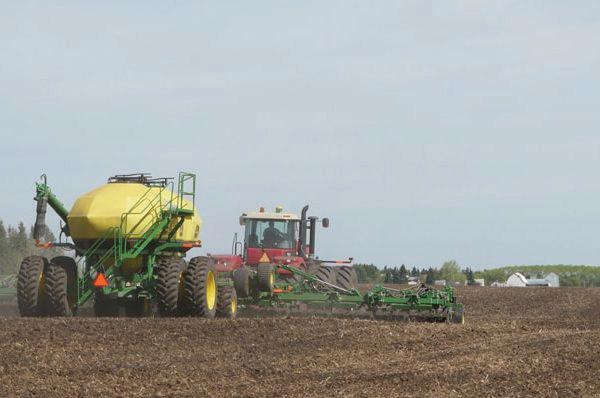
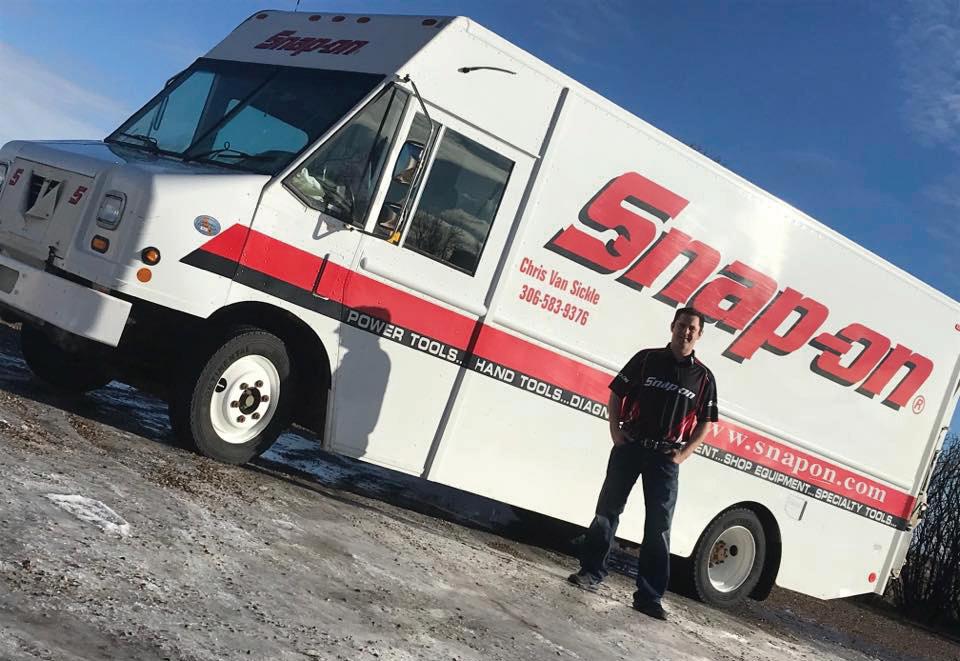
The village of Tramping Lake is home to St. Michael’s Church, a beautiful building constructed a century ago in 1922. Now the parishioners at St. Michael’s are busy
planning a 100th-anniversary celebration which will take place on Saturday, June 11th. Mass will be celebrated at 4:00 p.m., followed by a short program and catered supper at 6:00 p.m. at the Tramping Lake Community Hall.
Christine Lang, the mayor of Tramp-

ing Lake, said there are approximately fifty residents in the village, although the number fluctuates. “When the church was built, there were about 300 people living in Tramping Lake and surrounding area, and we had three grocery stores,” she explained. Now the church and the community hall are the two remaining community facilities.
“The church is beautiful with its large stations of the cross, water fonts, statues and unique interior,” Joyce Borschneck commented in a post on social media.
The first Catholic settlers arrived in the Tramping Lake area in 1906. In that year, Father Joseph Laufer, OMI, celebrated the first Mass on Pentecost Sunday in a sod church. In 1910 a wooden church was built at the same site.
At that time, the St. Michael’s parish flourished, and plans were made for a new church to be built on the townsite. The first Mass was held in the present St. Michael’s building on Christmas Eve, 1922.
Christine said, back in the day, St. Michael’s Church was built by hand. “They didn’t have a contractor; the men and boys came together and built the church. It cost somewhere around $48,000.” The exterior of the building is done in brick and stucco.
The men dug the basement using horses and a scraper, which was basically a scoop pulled by two horses. “Someone had said it rained after they had finished digging,” Christine said. “In those days, it rained for two to three days. There was so much water, they had to scoop it out, and the basement just got deeper.”
St. Michael’s Church in Tramping Lake is one of 99 church buildings in the Roman Catholic Diocese of Saskatoon. It holds about 650 people, although the

choir loft and basement are no longer used. “We used to have movies and all kinds of things going on in the basement, so did a lot of the other parishes,” Christine said.
St. Michael’s parish currently holds Mass on Wednesday and Sunday mornings each week. It’s also a popular venue for wedding ceremonies. The most recent wedding ceremony held there was a Christmas wedding on December 18th, 2021, when the church was beautifully decorated for the festive season.
The year 2022 finds the St.Michael’s Parish dwindling. “We’re a very small community; we have about 30 families,” Christine said. “And the last few years, we haven’t been able to have our usual fundraisers or fall supper.”
But those challenges didn’t stop Lang from taking the initiative in 2020. She decided to do a fundraiser on her own by making homemade pasta, and raised the amazing total of $1700.00!
Last year she recruited four more ladies, who worked for three weeks making pasta. “The first year I did it in my house; last year we went to the hall and worked there every morning. We sold 220 bags of pasta and raised about $2500.00,” Mayor Lang said. “That was quite an amount of money to raise in a few short years.”
In spite of declining numbers, the community has managed to shingle the roof of the church, paint its interior and also spent a significant amount on repairing the tower, which was leaking. The 100th anniversary will be an opportunity to celebrate their efforts and community spirit.
The parish is selling 225 supper tickets, with people coming from Rosetown, North Battleford and other areas.



SARCAN Recycling is seeking a long-term lease with a developer or owner of an existing or new facility in Kindersley, Saskatchewan. The building would be approximately 60’ W x 85’ L with an attached loading dock 25’L x 30-W’ for an approximate total of 6150 sq. ft. The facility must have access to dock two 53 ft. semi- trailers at the building. The property and building must be zoned for commercial/light industrial use. Minimum of 10 customer parking stalls and 5 staff parking stalls is required. Possession date would be agreed upon when an agreement has been finalized. SARCAN Recycling is not obligated to accept any proposals that do not meet its requirements.
Deadline for submission is March 25, 2022.
For drawings and technical details, please contact:
Carl Ens, General Manager of Capital Improvements & Special Projects
Phone: (306) 934-8879 office (306) 370-7664 cell
Email: cens@sarcan.sk.ca

The Kindersley Curling Club is thrilled to be hosting the Saskatchewan Curling Club Championships this week from March 24th to 28th at the West Central Events Centre. Games kick off at 8:00 p.m., March 24th, with the championship games will take place on March 28th at 1:00 p.m.
There are eighteen men’s teams and ten women’s teams from across the province playing off for the chance to represent Saskatchewan at the National Championships. Kindersley spectators will be cheering on their own Kindersley Curling Club representatives, the Colleen Swan Team and the Jessie St. John Team.
It will be an exciting event that spectators won’t want to miss! Admission is by donation, and the event is sponsored by G-Mac’s AgTeam. The community extends a warm welcome to all the participating teams and all the guests who are coming to Kindersley to take in some great curling games.















Send
Mallory Cawthra at mcawthra@uvic.ca





27 years ago, on February 21st, 1995, American millionaire Steve Fossett and his hot air balloon landed down in a farmer’s field near Mendham, Saskatchewan. Fossett was a successful businessman, in addition to being an avid adventurer, entrepreneur, aviator and sailor. Mendham is approximately 20 kilometres southwest of the Town of Leader.



Fossett had planned to land in California, having had “Seoul to San Francisco” written across his hot air balloon. Instead, starting from Seoul, South Korea, on February 17th, 1995, the combination of unpredictable weather conditions and faulty equipment ended in his touching down four days later in a farmer’s field, east of Mendham.
Many well-known American news outlets swarmed to the location after the landing, putting Mendham, and to a greater extent Leader, on the map. Having covered a distance of over 8,690 kilometres, Fossett was the first person to fly solo in a hot air balloon across the Pacific Ocean. Fossett had to contend with extreme cold and high altitudes throughout his journey; he had an oxygen mask on hand just in case.
Fossett allegedly spent $250,000 on the balloon (British made), which loomed 45 metres tall and weighed 2,700 kilograms.
In June 2002, Fossett became the first person to fly solo, non-stop, around the world in a hot air balloon dubbed “Spirit of Freedom.” An interesting fact is that the flight was sponsored by Bud Light. His balloon was ten stories high, and he started from Australia in June, and in just over 13 days, returned to Queensland, Australia, in July. In 2007 he went missing while flying an aircraft in Nevada, and was later presumed to be dead, which was confirmed in 2008.

There is a painted mural on the side of Jeff’s Farm Supply Store in Mendham, to commemorate both of the ballooning events. The colorful mural was painted in 2003 by the “Kurtz Girls.” The mural is a definite must-see attraction for anyone visiting the area, as well as a feather in the cap for local residents.





The Saudi Arabian threat to establish a rival golf organization to the PGA Tour appears to have gone out of bounds.
Rumblings for the past year or so about Greg Norman being the face of a Super Golf League, affiliated with the Asian Tour and backed by a $300 million investment by the Saudi Arabian government, have suddenly quieted down.
Players were signing up, the rumours said. Some of the game’s biggest names were reportedly willing to accept millions and millions of dollars from the Saudi-backed tour, being required to play only 14 events per year, 10 of them in the United States. Each event would be 54 holes with no cut, and last-place money being $92,000. Critics said the whole plan was designed for “sportswashing,” a method of trying to clean up the country’s negative image through wholesome sport.
Tour player Kramer Hickok says he knew of at least 20 PGA Tour players who were ready to jump into the Saudi money pit. Dustin Johnson, Phil Mickelson and Bryson DeChambeau, all recent major championship winners, were among the biggest names being ban-
died about. Jason Kokrak, Lee Westwood, Adam Scott and Ian Poulter were others mentioned as interested, but silent about their intentions due to reported non-disclosure agreements they had signed. Reports indicated the Saudi plan was going to go public during the week of the PGA Tour’s flagship event, the Players, in mid-March.
Then, Mickelson’s big mouth appears to have scuttled the whole shebang. American writer Alan Shipnuck went public with remarks Mickelson made to him last November during a research interview for an upcoming book. Mickelson was quoted as saying the Saudis were “scary mother-(expletive deleted)” and that he knew they had killed Washington Post reporter Jamal Khashoggi “and have a horrible record on human rights” … that they “execute people for being gay.”
Mickelson revealed he was involved to the point that he and three other Tour players actually hired the attorneys to draw up a legal document about how the SGL would be run. But, said Mickelson, it was all part of a plan to give PGA Tour players some leverage to extract more money and benefits from the U.S.-based Tour. Mickelson said he wasn’t even

sure he wanted the Saudi tour to succeed. Sounds like another case of Phil being Phil.
As soon as the Shipnuck quotes went viral, the dominoes started to fall. First Johnson, then DeChambeau, issued statements saying they were staying with the PGA Tour.
Rory McIlroy, solidly against the Saudi plan from the beginning, said the proposed new tour was “dead in the water. I mean, who else is going to do it? I don’t think they could get 48 guys.”
So the Saudi plan is dust. Is Mickelson’s reputation and legacy equally damaged?
• RJ Currie of sportsdeke. com: “According to Us Weekly Lindsey Vonn and Tiger’s
ex, Elin Nordegren, have become pals. Word is Vonn gave Nordegren some autographed skis and in return got a slightly used 9-iron.”
• Currie again: “Global AgeWatch Index has ranked 96 of the world’s best places for seniors to live. Its top three are Switzerland, Norway and the LA Lakers.”
• Janice Hough of leftcoastsportsbabe.com, after LeBron James said a potential third stint with the Cleveland Cavaliers is possible: “LeBron is becoming to NBA teams what Elizabeth Taylor was to husbands.”
• Steve Simmons of Sunmedia: “The perfect job for the suspended horseman Bob Baffert: training Russian figure skaters.”
• Blogger Patti Dawn Swansson, on Twitter: “One of the Brier skips, Glenn Howard, is 59. The alternate on the Newfoundland & Labrador team, Nicholas Codner, is 15. After games, Codner rocks to Xbox or PlayStation. Howard just rocks.”
• Comedy writer Alex Kaseberg: “The NFL became the first sports league to drop COVID protocols. There were never any protocols on the New York Jets’ wide receivers
because they can’t catch anything.”
• Another one from RJ Currie: “According to TripSavvy, last year Houston ranked No. 8 out of the 10 best U.S. cities for a quick visit. Or No. 1 if you were an NFL team.”
• Dwight Perry of the Seattle Times: “‘The concern about our fans is at the very top of our consideration list,’ said MLB commissioner Rob Manfred. Hey, if this baseball thing doesn’t pan out, he’s got a good start on stand-up comedy.”
• Perry again: “Definition of a moral dilemma: You’re an anti-masker AND a major-league catcher.”
• Headline at fark.com: “On this day in 1973, New York Yankees pitchers Mike Kekich and Fritz Peterson made a stunning declaration: the left-handers announced that they had traded wives, children and family dogs. The 70s were a wild time, man.”
• Another one from fark. com: “Jackson Mahomes, who would be totally unknown if he weren’t seeking media exposure, says the media is ruining his life.”
Care to comment? Email brucepenton2003@yahoo.ca
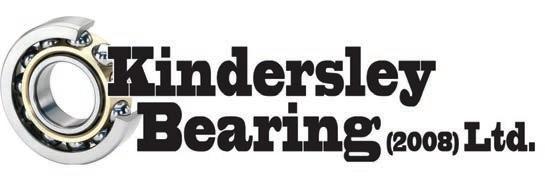




BY JORDAN PARKER https://parkerandpictures.wordpress.com/
Fear And Loathing In Las Vegas
Available On Netflix
It’s definitely one of the most oddball, off-the-wall movies I’ve ever seen, but it’s stuck with me for two decades because of it.
Fear and Loathing follows two loopy men – a journalist and a lawyer – who experience a number of psychedelic times while in Las Vegas.
Based on Hunter S. Thompson’s cult classic novel of the same name, it’s as weird as they come, but also huge fun.
Johnny Depp, Benicio Del Toro and Tobey Maguire are all fantastic in it, but it really is a two-man show with the formers.
If you look your movies incredibly weird, this one is definitely for you.
Ted Available On Netflix
From the man who brought you Family Guy comes this raucous, outrageous comedy flick.
It follows John, a man-child who just can’t seem to get it together. His childhood wish for his teddy bear to come to life came true decades ago.
Now he sits with his live bear, watches movies and smokes pot, completely neglecting his doting girlfriend Lori.
But she gives him an ultimatum: Her or the bear, and John must make the biggest decision of his life.
Writer-director Seth MacFarlane creates a hilarious little picture, and also voices the bear Ted.
Mark Wahlberg, Mila Kunis, Joel McHale, Giovanni Ribisi, and Patrick Warburton are all hilarious. It’s better than it has any right to be, and it’s a silly, raunchy good time.
Flee
Available On Prime Video
This incredible documentary is – far and away –my pick for both Best Documentary Feature and Best Animated Feature for this year’s Oscars.
Yes, this film manages to transcend to styles of film and put them together in one of the most gut-wrenching experiences of the year.
Nominated for three Oscars, Flee follows the true life of Amin, an immigrant now about to marry his long-time male partner.
But as his wedding draws near, he tells his story –the lack of acceptance from family, growing up queer in the Middle East, war, and everything else he’s endured to get where he is.
It’s harrowing and heartbreaking, and this is one of the absolutely best movies of 2021, bar none.
Shameless
Available On Netflix
Finally, all of Shameless is available for you to view on Netflix, and it’s the best comedy to come out of the 2000s.
During its 10-year run, Showtime’s TV remake of the British classic of the same name appalled and surprised viewers.
The epitome of laugh-or-you’ll-cry humour, it follows a Chicago family who live in poverty, and the disturbing lengths they go to in order to make ends meet.
Matriarch Monica took off years ago and patriarch Frank is a fall-down drunk who barely makes it home most nights, let alone spends time taking care of his children.
Oldest sister Fiona is the parental figure to her siblings Carl, Lip, Debbie, Ian, and Liam. She does what she can, and has put her entire life on hold for her family.
Joined by her best friend Veronica (and V’s dopey, well-meaning husband Kev), they make a go of it, often at the expense of others.
This is a very, very raunchy show, and it isn’t for the light of heart. But it deftly mixes comedy and drama, and does it incredibly.
Spencer Available On Prime Video
Anyone who continues to judge Kristen Stewart’s acting solely from her Twilight days is, quite simply, wrong.
Nominated for an Oscar here, she is absolutely incredibly as Princess Diana, and my personal choice to win Best Actress this year.
The embattled woman met a tragic end, and this chronicles her Christmas holiday at the Sandiringham estate in England as she struggles with her mental health.
It also marks the point – in 1991 – when she chooses to end her decade-long marriage to Prince Charles, despite the wishes of the monarchy.
Stewart is joined by Timothy Spall, Jack Farthing and Sally Hawkins, all of whom also give rousing performances.
It’s a difficult meditation on mental health, but an absolutely necessary watch for cinephiles and lovers of fantastic acting.








entertainment you won’t want to miss.
The Bromantics are a Saskatchewan six-piece 1950’s tribute band. They performs timeless music from the 50’s and 60’s, and they’re performing in Kindersley on Friday, March 18th at the Norman Ritchie Community Centre. They bring back old tunes such as Twisting the Night Away and Splish Splash.
The original music they produce belongs to the same genre of music, that’s inspired by tunes from the 1950’s era. Those new songs will be released in the next few months. Although they’ve recorded a hand full of videos, the band primarily does live performances.
Their brass instruments combine with vintage guitar to create a nostalgic sound. Do you remember old style harmony accompanied by an occasional “doo-wop doo wop”? Then the Bromantics will bring
This all-male group is energetic, lively, funny, with a great stage presentation. The band claims their primary goal is to have fun and connect with their audience, which is obvious as the band has fun while on stage.
Memorable tunes are combined with modern trends, which people of all ages will enjoy. The group is definitely ready to entertain after having had to cancel and postpone shows during the pandemic. They realized how much they relied on those live performances during that quiet period.
Robert Haakenson, guitar player, said in an online interview “It was super tough.” They had just finished 17 shows and were on high momentum, when it all came to a sudden stop.
Tim Lynchuk, lead singer,

said “We did one show in the summer of 2021 at Moose Jaw. It was a warm up. We didn’t get a lot of rehearsals in, but we have a lot of great guys in the band … great musicianship,
great comaraderie.”
“We really enjoy what we do,” Robert said. And they’re hoping you’ll enjoy listening to them when they come to town. Their performance is part of the 2021/2022 Stars for Saskatchewan Concert Series presented by the Organization of Saskatchewan Arts Councils and the Kindersley Arts Council.
JORDAN PARKER
Your Southwest Media Group
Heading into their final six games, the Klippers needed to win all but one to move on to the SJHL playoffs.
But they also didn’t count on a late-season surge from the Notre Dame Hounds, one that knocked Kindersley’s playoff hopes down with two games to go in the regular season.
Down five points from their rivals, Kindersley now finds themselves on the outside looking in as they head into the season’s final two games this weekend.
“We were officially eliminated Saturday. We beat Battleford 4-2, but Notre Dame beat Yorkton the same night,” said Assistant Coach Mitch Topinka. “It’s weird to go into this week knowing we’re out of the dance.”
It was Notre Dame’s stunning six-point leap in the standings on the final weekend in February that propelled them forward. They’ve gone 1-2 since, but the Klippers are just too far behind to make up ground.
“It’s all a bit bittersweet. We knew these final games would be tough. We had to win four of our last five. Friday, we lost at home against Battleford, but we hoped

Notre Dame wouldn’t get another point,” he said.
“We were in such high spirits Saturday up two goals in the third; then the announced said Notre Dame had won. We were out of the playoffs. But we needed to get through those last few minutes and move forward.”
The team went through a season that saw them fight the injury bug, cope with COVID-19, see huge lineup changes at the trade deadline, and struggle to stay out of the penalty box. Topinka says there needs to be fire to keep going.
“You play 58 games in the season, and you really do have to play them all. We still have two left. For the 20-year-olds graduating from the league, we want them to take what they can from the experience and enjoy the last week,” he said.
“For guys who can come back, these games are still tryouts. If they’re not here to perform, they shouldn’t be here. They
RM of Newcombe No. 260
NE 1/4 - 4-27-24 W3rd SW 1/4 - 10-27-24 W3rd
Possibly more land to be rented out later. All bids considered. Highest bid not necessarily accepted. Approximate closing date: March 31st, 2022.
Mail bids to:
Box 1, Glidden, SK S0L 1H0 Ph. 1-306-463-3604
need to work, keep it positive and high-tempo, and finish this season with their heads held high.”
Team Captain Jaxon Georget, Assistant Captain Noah Lindsay, recent acquisition Andrew Schaab, and starting goaltender Matthew Pesenti are ageing out at the end of the season.
“We are going to miss those guys, but that’s the nature of this league. We have 18-and-19-year-olds who need to come show what they have,” he said.
Every single Klippers defenseman is eligible to return next season, meaning their defensive core could remain largely untouched.
“We will have to make some tough decisions, but it’s nice none of them are ageing out. It definitely helps,” he said.
As for goaltender, Topinka is sad to lose a player of Pesenti’s ilk.
“It’s not every day you have a player like him. In my eyes and Head Coach Plaquin’s, he’s one of the top goalies in the league. It’s going to be tough to replace him,” he said.
“It’s part of things, this rotating door, but our goalie Brett Sweet can help. Meetings with scouts and coaches will help us decide what to do.”
While the Klippers didn’t make the playoffs, Topinka hopes the team can find some silver linings from the year.
“We had ups and downs, but this is a great group of guys. There has been some truly elite play here,” he said. “I’m sure everyone is sad the season will be done soon, but I don’t have a single complaint about this staff or the character of the guys on this team.”

The Kindersley U13 Full Tilt Thrashers completed round one of Hi-Way 14 playoffs this past weekend.
Friday March 4 the team took to the road, travelling to Dinsmore. Puck dropped against the Prairie Predators at 5 pm, and after a penalty filled game the Thrashers took game 1 with a score of 9-5.
Game 2 resumed Saturday night in Kindersley.
NE 6-29-28 W3
SE 6-29-28 W3
Closing date for Tenders is 4:00 p.m., April 1, 2022.
• Highest tender or any tender not necessarily accepted.
• Offers must exclude G.S.T. or any other levies which may be payable by the tenant.
• Tenant must rely on their own research and inspection of the property.
Forward Tender to:
Sheppard & Millar Barristers & Solicitors 113 - 1st Avenue East
Box 1510, Kindersley, Saskatchewan S0L 1S0
Attention: Monte Sheppard
Please include file 22-7186 when submitting tender.

The other goal scorers were: Seth Elliott, Easton Wigley (2), Madden Greenwood (2), Gibson Miller, Logan Ady and Simeon Bakanec. Assists went to Simeon Bakanek (2), Gibson Miller, Seth Elliott, Levi Norberg and Braxon Vanthuyne.
Rhys Schury scored all three goals for Dinsmore.
Congrats Thrashers on continuing onto round two! Next Games are still TBA.
Levi Norberg managed a goal within the first minute of play, and the team followed his lead. They ended the two game series with a 10-3 win. Norberg also added another goal in the second period.
Meet Irene, our newest resident to EOL! Irene moved here only a couple months ago from a great little place south of the river, Leader! She was married to her husband Dennis for 63 years & has 5 daughters, 11 grandkids, 15 great grand kids & another on the way. First Job: Ward aide in Vancouver Favourite Food: Knefla Favourite Holiday: Arizona Irene has a great sense of humour and definitely brightens up our morning exercises with some laughs!
All Sec. 11-20-26-W3rd - 627 acres (18,700 bushel storage)
S 1/2 19-20-25-W3rd - 312 acres
NW 17-20-25-W3rd - 160 acres
SW 20-20-25--W3rd - 3160 acres (10,600 bushel storage on 17 & 20)
E 1/2 24-20-26-W3rd - 270 acres (15,300 bushel storage)
W 1/2 24-20-26-W3rd - 165 acres (16,700 bushel storage)
E 1/2 13-20-26-W3rd - 130 acres
1. Good stewardship & sustainability important.
2. A three year term preferred.
Bids close 5:00 p.m., Monday, March 21, 2022.
Box 246, Maple Creek, SK S0N 1N0 email: dtumbach@sasktel.net
Ron Tumbach cell: 306-628-7539
Daryl Tumbach cell: 306-662-8660





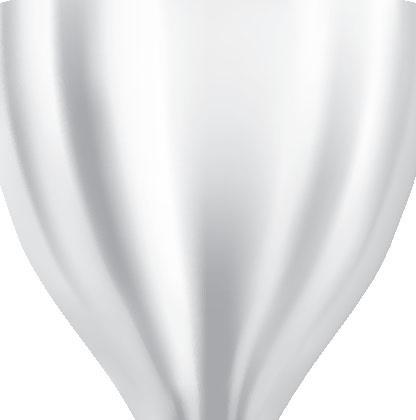












ARIES (March 21 to April 19) This is a good time to reassess important relationships, both personal and professional, to see where problems might exist and how they can be overcome. Keep communication lines open.
TAURUS (April 20 to May 20) It’s not easy to bring order to a chaotic situation, whether it’s in the workplace or at home. But if anyone can do it, you can. A pleasant surprise awaits you by week’s end.
GEMINI (May 21 to June 20) Be careful that you don’t make an upcoming decision solely on the word of those who might have their own reasons for wanting you to act as they suggest. Check things out for yourself.
CANCER (June 21 to July 22) A personal relationship that seems to be going nowhere could be restarted once you know why it stalled. An honest discussion could result in some surprising revelations.
LEO (July 23 to August 22) That unexpected attack of selfdoubt could be a way of warning yourself to go slow before making a career-changing decision. Take more time to do a closer study of the facts.
VIRGO (August 23 to September 22) A workplace problem needs your attention now, before it deteriorates to a point beyond repair. A trusted third party could be helpful in closing the gaps that have opened.
LIBRA (September 23 to October 22) A recent family situation could give rise to a new problem. Keep an open mind and avoid making judgments about anyone’s motives until all the facts are in.
SCORPIO (October 23 to November 21) Rely on your always-sharp intuition to alert you to potential problems with someone’s attempt to explain away the circumstances behind a puzzling incident.
SAGITTARIUS (November 22 to December 21) Although you still need to do some snipping of those lingering loose ends from a past project, you can begin moving on to something else.
CAPRICORN (December 22 to January 19) With your self-confidence levels rising, you should feel quite comfortable with agreeing to take on a possibly troublesome, but potentially well-rewarded, situation.
1. GEOGRAPHY: How many countries are also cities?
2. MOVIES: Which character was the first princess in a Disney movie?
3. WEATHER: What kind of cloud produces rain, thunder and lightning?
4. LITERATURE: What were the names of the four daughters in “Little Women”?
5. PSYCHOLOGY: What fear is represented by the condition called “ablutophobia”?
6. ANATOMY: What are the gaps between nerve cells called?
7. TELEVISION: Which long-running, daytime soap opera is set in Port Charles, New York?
8. LANGUAGE: What does the Latin phrase “non compos mentis” mean in English?
9. U.S. PRESIDENTS: Which president introduced the Social Security program?
10. ANIMAL KINGDOM: What is a young llama called? © 2022 King Features Synd., Inc.
AQUARIUS (January 20 to February 18) Travel is favored, both for business and for fun. The end of the week brings news about an upcoming project that could lead toward that promised career change.
PISCES (February 19 to March 20) You might feel suddenly overwhelmed by a flood of responsibilities. But if you deal with each one in its turn, you’ll soon be able to hold your head above water and move on.
BORN THIS WEEK: You have a wonderful way of offering comfort as well as guidance. You would do well in the healing arts.


• Industrial
•
Contact: Chris Scherger 306-753-2887 chris@elbuilding.ca •



This Nutrition Month, Dietitians of Canada invites you to discover the power of eating a healthy diet. The theme for this year’s event is Ingredients for a Healthier Tomorrow, which aims to help raise awareness about foods that can improve your health. Here are three tips for healthy eating.
1. EAT FRESH PRODUCE
Regularly eating fruits and vegetables can reduce your risk of diabetes, heart disease, stroke and cancer. Try to add vegetables to every meal and snack on fresh fruits.
2. LIMIT YOUR INTAKE OF FATS
According to the World Health Organization (WHO), your fat intake should be less than 30 per cent of your total caloric intake. This can help reduce the risk of certain diseases and prevent excessive weight gain. To decrease your intake of this nutrient, choose lowfat dairy products, limit the amount of fried foods you eat and replace butter with oil.
3. CONSUME LESS SALT

1. GREEK According

Contributions to a political party get a bigger tax credit than contributions to a charity. In fact, for federal political contributions you get a credit of 75% on your first $400 contributed. If you contribute to a political party or candidate, make sure to keep your receipts separate from your charitable receipts.


Limiting your salt intake to less than five grams per day can reduce your risk of high blood pressure, stroke and heart disease. Be particularly mindful about sodium in condiments and packaged snack foods.
Do you want to change your eating habits? If so, reach out to a dietitian in your area.
MARCH 16, 2022
This year marks the thirteenth anniversary of celebrating Dietitians Day in Canada. The event shines a spotlight on the profession and is a reminder that dietitians are a trusted choice for reliable, lifechanging food and nutrition advice.


which are touted for their immuneboosting and cancer-fighting properties.
2. JAPANESE The traditional Japanese diet promotes whole or minimally processed foods like fresh fish, pickled vegetables, seaweed and grains. Additionally, Japanese people regularly eat fermented soy products like miso, which contain probiotics that promote gut health.
4. THAI Thai cuisine is mainly composed of nonstarchy vegetables and lean proteins. Fresh herbs and spices are also key ingredients that offer health benefits. For example, turmeric has antiinflammatory properties and ginger aids in digestion. Thai cuisine also features garlic and onions, which are foods that have antioxidants that help fight cancer.
5. ETHIOPIAN Ethiopian food mainly comprises grains, spices, lentils, cabbage and lean meats like lamb. The typical diet is high in fiber and protein. Injera, for example, is a traditional crepe that’s made from a grain called teff, which has been referred to as the next super grain.
This month, learn more about making informed food choices and developing healthy eating habits.
3. ISRAELI Israeli cuisine is full of healthy staples like fruits, vegetables, legumes and fish. Plus, most of their fats are unsaturated and come from olives, nuts and avocados. Hummus is one example of a healthy Israeli dish. It’s made primarily from chickpeas, which are rich in protein and packed with key vitamins, minerals and antioxidants.





• On March 17, 1601, the first parade honoring the Catholic feast day of St. Patrick, the patron saint of Ireland, is held in what is now St. Augustine, Florida. The first St. Patrick’s Day parade in New York City was held in 1762.
• On March 20, 1823, Ned Buntline, the “dime millionaire” and discoverer of Buffalo Bill, is born. More than any single writer, Buntline was responsible for creating a romanticized and misleading image of the American West. He once said, “I found that to make a living I must write ‘trash’ for the masses.”

• On March 18, 1852, in New York City, Henry Wells and William G. Fargo join with other investors to launch their namesake business. In July 1852, their company Wells Fargo shipped its first loads of freight from the East Coast to mining camps in northern California.
• On March 15, 1901, paintings by the late Dutch painter Vincent van Gogh are shown in Paris, causing a sensation across the art world. Van Gogh had died by suicide, and in his lifetime he had sold only one painting.
• On March 19, 1916, eight Curtiss “Jenny” planes of the First Aero Squadron take off from Columbus, New Mexico, in the first combat air mission in U.S. history. They flew in support of the 7,000 U.S. troops who invaded Mexico to capture revolutionary leader Pancho Villa.
• On March 16, 1945, the west Pacific volcanic island of Iwo Jima is declared secured by the U.S. military after weeks of fierce fighting. More than 6,000 Marines died fighting for the island, along with almost all the 21,000 Japanese defenders
• On March 14, 1950, the FBI institutes the “Ten Most Wanted Fugitives” list. Since its debut, hundreds of criminals on the list have been apprehended or located, many as a result of tips from the public.
© 2022 Hearst Communications, Inc. All Rights Reserved

Public notice is hereby given that the Council of the Town of Kindersley intends to adopt Bylaw No. 02-22 being a Bylaw to regulate zoning in the Town of Kindersley under the Planning and Development Act, 2007
Proposed Bylaw No. 02-22 to adopt a new Zoning Bylaw that will control the use and development of the land in the municipality and assist in implementing the Official Community Plan for the Town of Kindersley.
• The intent of this Zoning Bylaw is to provide for the amenity of the area within the Town of Kindersley (hereinafter referred to as Kindersley) and for the health, safety, and general welfare of the inhabitants of Kindersley and area:
o To minimize land use conflicts.
o To establish minimum standards to maintain the amenity of the Town.
o To ensure development is consistent with the physical limitations of the land.
o To restrict development that places undue demand on the Town for services; and
o To provide land-use and development that is consistent with the Town’s goals and objectives.
The affected land is legally described as the Town of Kindersley
The reason for the adoption of a new bylaw is to consolidate all amendments from the last Zoning Bylaw 04-14 and provide better interpretation thereof
Any person may inspect the bylaws at the Town Office, located at 106-5th Avenue East, in the Town of Kindersley, between the hours of 8:30 AM and 4:30 PM on Monday to Friday, excluding statutory holidays. Copies of the proposed bylaw are available at the Town Office at a cost of $1.00.




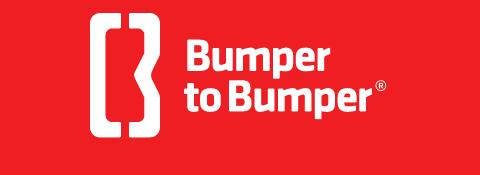

HZN.kindersleyshared@hubinternational.com



Monte J. Sheppard, BA., JD. Mark L. Millar, BA., JD. 113 1st Ave. E. Kindersley SK S0L 1S0 Bus. 306-463-4647 – Fax 306-463-6133 Kerrobert 306-834-5657 Kindersley.law@sasktel.net





306.242.6000 Fax: 306.956.3356 #250 1820 8th Street E Saskatoon, SK S7H 0T6 Ksedgwick@remax.net www.remaxsaskatoon.com Sheppard &Millar Law Barristers and Solicitors















The family of Diane Krogstad would like to thank family, friends and the community for your kind words, cards, thoughts, prayers, love, flowers and meat trays. Thank you to the doctors and staff at the Kindersley Hospital for your kindness and caring. Thank you to Kindersley Funeral Home for your caring and guidance during this difficult time. Thank you to the doctors and staff on the 6300 ward at Royal University Hospital in Saskatoon. - The Krogstad Family

Stella Frances “Fran” Lyons (nee Kachmarski)
October 19, 1932 - March 3, 2022
Apparently, it is time for me to move on to the “other side’.
I’ve had 89 years in this world filled with family, friends and fun. For years I have said, “If I die today, I’ll die happy”. I hope to be with my husband Milt (who died in 2016), my Mom, Dad, siblings and good friends who have gone before me.
I will miss my daughter Bev and her husband Pete, my daugh-

KROGSTAD - Diane May (Oakley) Krogstad was born August 25, 1946 in the Royal Alexander Hospital in Edmonton, Alberta to Lawrence Roy Oakley and Pearl Vera (Kemp) Oakley. Diane passed away at the Kindersley Integrated Health Centre on February 16, 2022 after a brief battle with cancer. She leaves to mourn, her husband Norm of 38 years; her daughter Sheryl (Bryan) Maclennan of Calgary, Robert and grandchildren Rachel E. Krogstad of Saskatoon and Joel W. Krogstad of Kinders-
FOREFRONT INSURANCE is hiring external brokers and processors/data entry positions. Broker partnership opportunities for the right candidates. Call / email Michael 403-501-8013 / mhollinda@excelrisk.ca
Farmland Tender; Quarter Section of grainland South of Shellbrook near N-SK River. Elk/ moose hunting area. Tenders close Mar. 31/22. Call Gerald Muller, C&C Realty, 306-5707743.
ter Tracy who has been my personal caregiver these past few years (bless her heart), my daughter Leslee and her partner Gaston, and my son Kelly. How will they manage without me?!
Speaking of begats, I also have 2 grandchildren: Megan who is raising 4 of my great grandchildren (Leam, Wyatt, Quinley and Sawyer) and Robert who married Kristy and produced my fifth great grandchild Aubrey.
I was born to pioneer farmers Magdeline (nee Zarowny) and Joseph Kachmarski near Brock, a small town in Sask., but spent most of my life as a wife and mother in Calgary. I’d met Milt when I was 15, married at 19, and started a family right away. I did work outside our home part-time at Sears while raising our children and as a banquet manager after they all flew the coop, but really, caring for Milt was a full-time occupation!
We finally sold our family home of 55 years in Calgary and moved to Vernon to live out our retirement closer to two of our daughters. It
ley; brothers-in-law, Larry (Joey) Oakley, Neal (Irene) Oakley; sisters, Kathy (George) Legresley, Debbie (Joe) Murray, Virginia (Wilbur) Rochow, Carol (Rob) Stewart; in-laws, Vivian Krogstad, Olive Coutts, Garry Smith, and many nieces and nephews, friends, and numerous co-workers whom she considered friends.
Diane was predeceased by her sister Irene, her parents Lawrence and Pearl Oakley, Norm’s parents Oliver and Beatrice Krogstad, her sister-in-law Ruth Smith, and brothers-in-law Don Krogstad and John Coutts.
Diane grew up with her grandparents in Halifax, Nova Scotia, where she graduated from high school. She continued her education at secretarial school in Dartmouth. Her first job was at Sobey’s in Halifax.
In 1966 she married William John Carr. They had two children, Sheryl Lea - born Jan. 2, 1970 and Robert William - born Aug. 21, 1973. In 1973 they moved to Calgary, Alta., then to Vancouver in
Offering 30 Slowly Developed 2 Year Old Angus Bulls. March 18, 2022. Wawota, SK. 306-5779141 www.gbtangus.com
When you place a classified ad with us, it goes in all three of our community newspapers for ONE LOW PRICE! Call Kate at 306-463-2211 kate@yoursouthwest.com
YOUR WEST CENTRAL VOICE THE KERROBERT CHRONICLE THE OYEN ECHO
was hard to leave our close, longterm friends, but they are mostly dead now, so maybe I’ll see them again, too!
I have always said, “Life is hard. Then you die.” But it has been a good life. My final words of wisdom to the throngs who will mourn my passing: “Enjoy yourself. It’s later than you think!”
Fran had planned to host her own Celebration of Life party in May/2020 but the Covid 19 pandemic interfered. This was a huge disappointment to her, but after a few recent health issues, she had lost her yearning to party. She died March 3, 2022 with her daughters at her side. She does not want a funeral, but you are welcome to watch her video tribute, which we had planned to show at her party: https://vimeo.com/572523330/ f63a49e429
Her and Milt’s cremains will be interred in a columbarium in the cemetery at Brock, Sask. Memorial donations can be made to the Canadian Red Cross or the Ukrainian Canadian Congress (UCC.ca).
1974, then back to Calgary in 1981.
Shortly after they separated, Diane worked at the Willie Woozle in Sunridge Mall in Calgary. In 1982 I met Diane at the Sunridge Mall.
On February 26, 1983 Diane and I married at my brother and sisterin-law’s home in Calgary. Shortly after we moved to Kindersley. Diane began to work at Kindersley Co-op. From there she started to work at Kindersley Hospital, then going to work at Sunset Lodge, and then moving to the Heritage Manor when it was completed. She worked there until she retired 31 years later. She did some volunteer work at the hospital. She loved to spend time with her grandchildren and many great friends.
On June 17, 1985 I adopted Diane’s children, Sheryl and Robert, and I don’t know how I’d get through this without them.
Until we meet again, Sweetheart, I’ll always love you.
There will be a celebration of Diane’s life on June 18, 2022 at the Elks Hall starting at 2:00 p.m.

+GST (up to 700 words. Includes photo) Will be uploaded to
website www.yourwestcentral.com at no extra cost.
Eulogies & Poems will be charged an additional .20¢ per word. You can submit it to us directly or ask your funeral director to submit it on your behalf.



